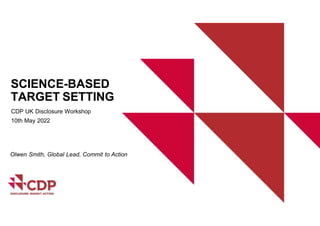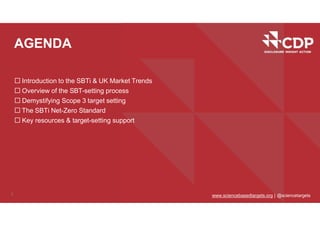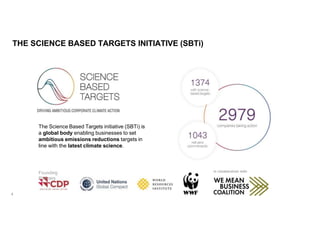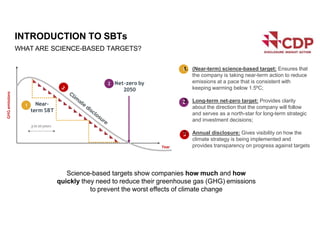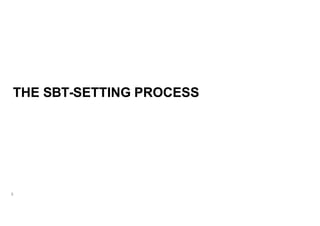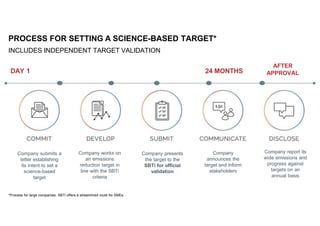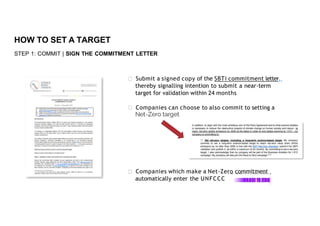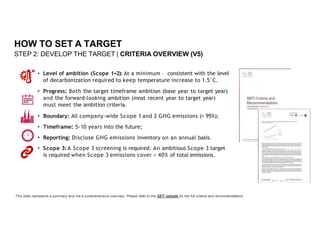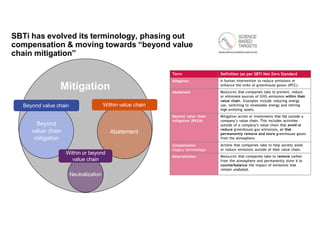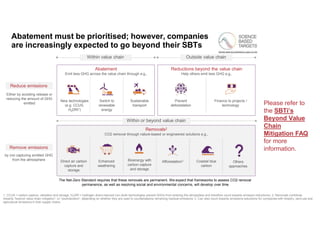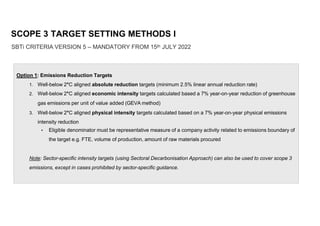The document outlines the Science Based Targets Initiative (SBTi) and its role in helping businesses set emissions reduction targets aligned with climate science, emphasizing the importance of transparency and stakeholder communication. It covers the process for establishing near-term and long-term targets, the significance of the recently launched net-zero standard, and challenges associated with scope 3 emissions. Key resources and support tools for companies to adopt these targets are also highlighted.
